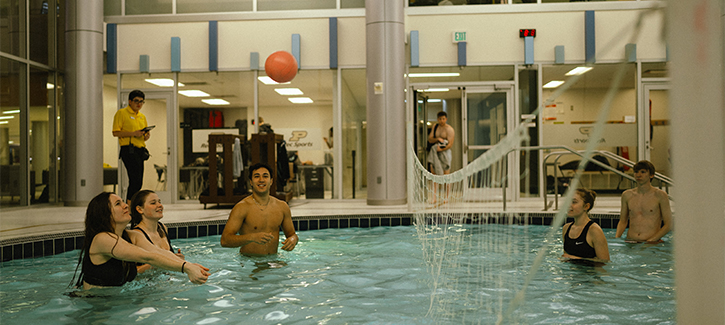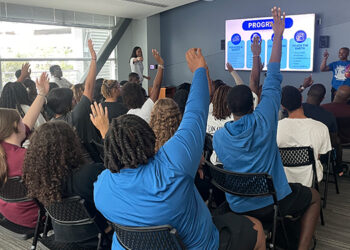Since recently implementing a pay-to-play-model for intramurals, Purdue University RecWell has seen revenue nearly triple for the department.
According to Mitch Nettesheim, the senior associate director — Programs, Purdue RecWell formerly offered a team-oriented, fee-based program. Now, students can purchase an independent pass that covers all sports they wish to participate in.
“Purdue has had frozen tuition for over 10 years,” said Nettesheim. “So, finding revenue streams has been a pervasive theme within recreation. In a perfect world, we’d have enough student fee money to offer all our programs and services without any financial barriers. When you start talking about revenue streams, you are naturally embarking on the path of becoming more businesslike. Our campus is highly fiscally sensitive. The interest in financial viability is increasing everywhere.”
Previously, the intramural fee was a per-team rate in the $100 range depending on the sport. That’s changed to individual passes which are $30 for a semester and $55 for the whole school year. Upon purchasing a pass, students are eligible to sign up for as many intramural leagues or tournaments as they’d like. League eligibility still applies to playing in one co-rec, one single gender and one unified league per sport.
Necessity for Pay-to-Play
Jason Maynard, the senior assistant director — Sport Programs, said around 9,000 students currently participate in intramurals at Purdue RecWell. That number has grown by around 1,000 within the past eight years with enrollment increasing.
“We must compensate for those frozen fees,” said Maynard. “We must let more people in so we can keep bringing in money to support increased costs for extra staffing, space and equipment. Monetizing to help support that growth is important. That revenue generation can help reinvestment in intramural sports, our esports program and across RecWell.”
Maynard added the increase in students is also further limiting available space. To solve this, RecWell is getting more creative with programming by stepping out of traditional time slots to ensure students are getting an experience worth paying for.
“The reality is we’ve maxed out those traditional times for sports programming, there’s no more room for expansion and we have more students coming to our campus,” said Maynard. “We’re adding in a new time for cricket, but we’re going to put it on Sunday at an early slot to see how our participants respond to that.”
By thinking outside the box like this, Maynard said more students would be willing to pay the fee to receive the benefits of intramurals which include social interaction, fulfilling competition and alternative avenues away from mainstream fitness.
Crucial Advice for Generating Revenue
While changing fees has been positive for Purdue RecWell, Maynard strongly advised other departments to first clearly communicate the value of any such change with students.
“If we don’t communicate that, there’s going to be an uproar,” said Maynard. “There’s no reason in their mind to increase it unless you detail the value added for them. Then, they can evaluate at that point and decide if it’s worth it.”
In that spirit of communication, encouraging feedback from participants through surveys also helps improve the quality of offerings and staff development — specifically with referee competence.
“If our officials aren’t performing at a level I’m comfortable with, our players are dissatisfied,” said Maynard. “We must ensure our officials are achieving a high level of improvement and they’re well trained before we put them on the court or on the field. That way, our students feel like they’re getting a high-quality product. It’s something that’s important to us.”
Overall, while the pay-to-play experience for Purdue RecWell has been beneficial, each department must study if such a program is right for its campus. Then, it must be implemented successfully for students. For Nettesheim, the initiative made perfect sense for Purdue.
“I trust across the entire country there’s been more competition for students,” said Nettesheim. “So, we’re trying to build our programs and services, and then attach fees for those which would be considered an amenity or exhilarating service. We keep fees as nominal as possible. But that’s the underlying philosophy for how we determine charging a fee.”
Want more updates and information on how the best strategies to create more revenue? Sign up for a digital subscription here.










